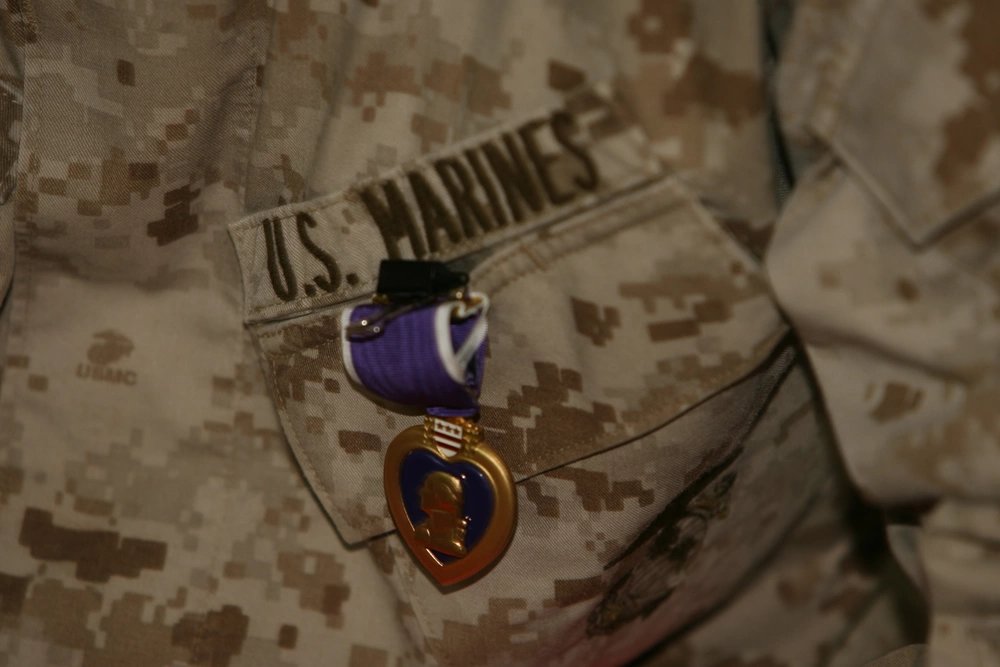

The Purple Heart has remained a steadfast symbol of courage and bravery. As members of the military family, there’s no doubt we’ve all heard of the Purple Heart, we’ve listened to the stories behind them and a few have maybe even seen one up close. But how much do you really know about the Purple Heart?
Here are 8 interesting facts to get you up to speed.
The oldest military award in history
The Purple Heart was created by George Washington on August 7, 1782, by the Commander-in-Chief of the Continental Army, General George Washington. At its inception, it was known as the Badge of Military Merit, and at the close of the Revolutionary war, the medal was only given to three Revolutionary soldiers. No medals were given again until 1932.
Why is it purple?
The Purple Heart as we know it today was redesigned by General Douglas MacArthur in 1932, in honor of the bicentennial of George Washington’s birthday. The medal is emblazoned with a bust of George Washington and displays his coat of arms and the words “for military merit” are inscribed on the back. It is believed that the color purple was chosen because it represents courage and bravery.
Qualifications have changed over the years (and continue to evolve)
When the Purple Heart was re-established in 1932, the award was limited to those serving in the Army or the Army Air Corps. In 1942, President Roosevelt formally designated the award for those who were wounded or killed in battle. He also expanded the eligibility to all branches of the military and allowed the Purple Heart to be awarded posthumously. In 1996, eligibility was further amended to allow Prisoners of War to receive the award.
First service member in modern history to receive the Purple Heart
While Revolutionary War soldiers William Brown, Elijah Churchill, and Daniel Bissell, Jr. were the first to receive the Badge of Military Merit, General Douglas MacArthur was the first modern-day recipient of the Purple Heart for his service during WWII.
1.8M Purple Hearts have been awarded
While there have been gaps and inconsistencies in record keeping since the Purple Heart was re-established in 1932, it is estimated that approximately 1.8M Purple Hearts have been awarded.

First woman to receive the Purple Heart
Army Lt. Annie G. Fox was the first woman to ever receive a Purple Heart for her heroism during the attack on Pearl Harbor in 1941. Serving as the chief nurse at Hickam Field, Hawaii, Fox’s calm demeanor and exemplary leadership guided her staff through the events of that day, no doubt saving countless lives.
The Military Order of the Purple Heart
Purple Heart recipients can join The Military Order of the Purple Heart. Formed in 1932, the MOPH is the only veteran’s service organization composed of only combat veterans and, of course, Purple Heart recipients.
First (and only) president to receive The Purple Heart
While more than half of our nation’s presidents have served in the military, only one was ever awarded a Purple Heart. President John F. Kennedy served in the Navy during WWII, and in 1943, he sustained a back injury when a Japanese destroyer collided with his torpedo boat in the Solomon Islands. Although he was injured, the former President swam three miles to shore with an injured crew member in tow. On July 12, 1944, John F. Kennedy received both a Purple Heart and a Navy and Marine Corps Medal (the Navy’s highest honor) for his actions that day. When he was asked about his heroism, JFK famously and humbly replied, “It was involuntary. They sunk my boat.”
